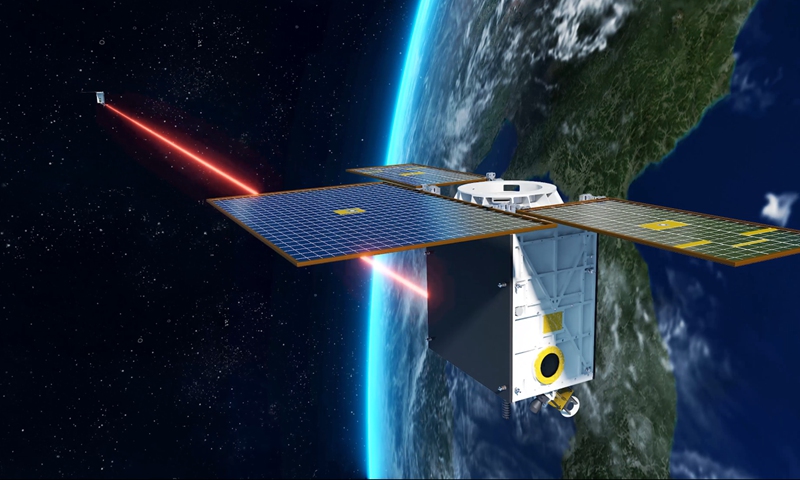China successfully builds laser communication links for new-generation space-borne IoT project

Photo: CASIC
China's new-generation space-borne Internet-of-Things (IoT) project codenamed Xingyun-2 has successfully completed the communication link between the first two satellites in the network, marking a historical first in the country's IoT space network, the Global Times learned from the developer on Thursday.
Technological testing for the laser communication payloads onboard the two satellites of the Xingyun-2 project achieved success, the project developer team with the LEOBIT Technology Co of the Wuhan-based Sanjiang Group, a subsidiary under the state-owned China Aerospace Science and Industry Corporation (CASIC), told the Global Times on Thursday.
The two satellites coded Xingyun-2 01 and 02 are the first two satellites of the network and they were launched on May 12 by the country's Kuaizhou-1A commercial carrier rocket, which was developed by the Wuhan-based Sanjiang Group. And in-orbit tests have been in process ever since.
"Having successfully built communication link between the two satellites, all core technological tests for the spacecraft have been fully conducted," the developer told the Global Times in an exclusive interview on Thursday.
Inter-satellite laser communication technology is to use laser beam to convey information in the forms of such as image, audio and signals, in space, in a high-speed fashion and with a strong interference-resistance capability.
By adopting such inter-satellite communication technology, the satellite constellation can reduce dependence on ground stations, saving the cost of building such ground facility, and at the same time, enabling the space-based network to cover larger areas to achieve global measuring and controlling capability.
According to the developer, laser communication links in space is a key and trendy technology in global communication satellite system development of the present day.
The Xingyun-2 project has become a first IoT network in China that has managed to build such laser communication link. And the payload onboard the satellites, weighing only 6.5 kilograms with power consumption of merely 80 watt, also marked the lightest of its kind in the country.
The US Starlink and LeoSat constellations are also using such technology for their network building project.
"Xingyun" project is developed by CASIC with a network of 80 low-orbit communication satellites.
The satellites will be used to test applications in multiple fields, such as intelligent container monitoring, polar environmental monitoring, meteorological forecasting as well as marine transport communication, and lay a foundation for the following space-based IoT network.


